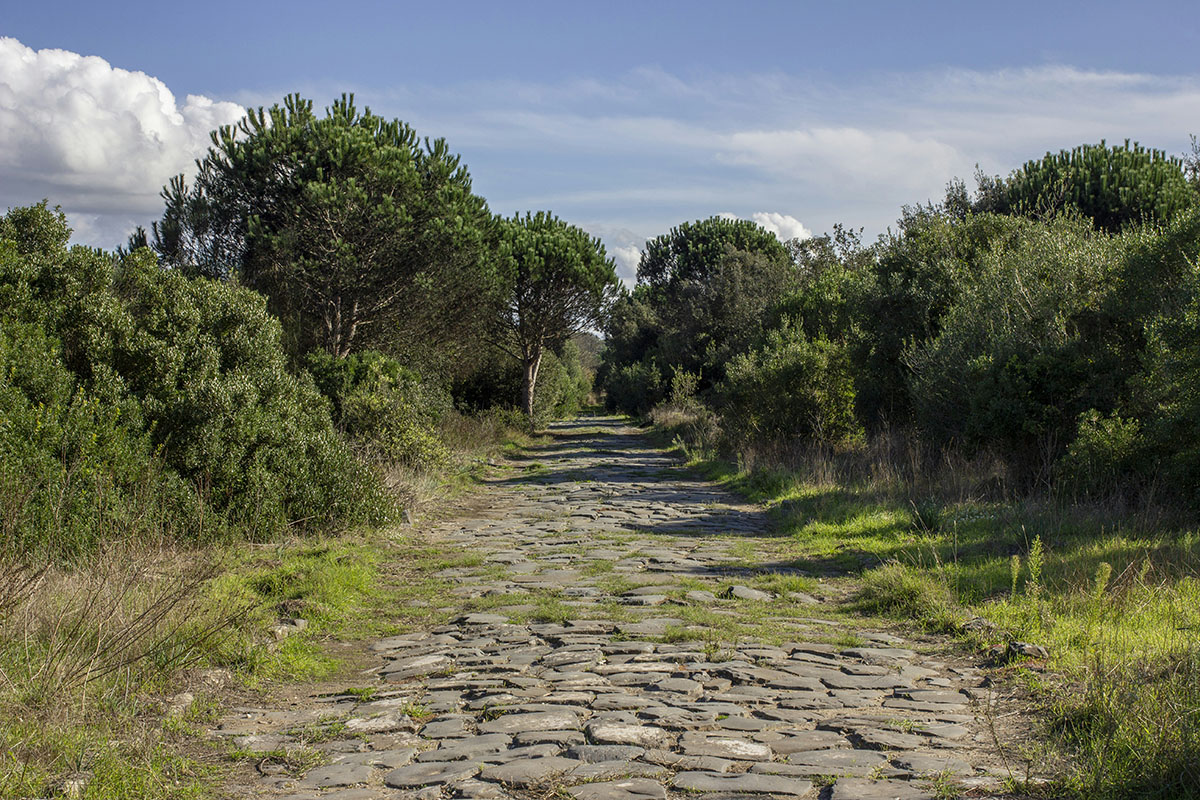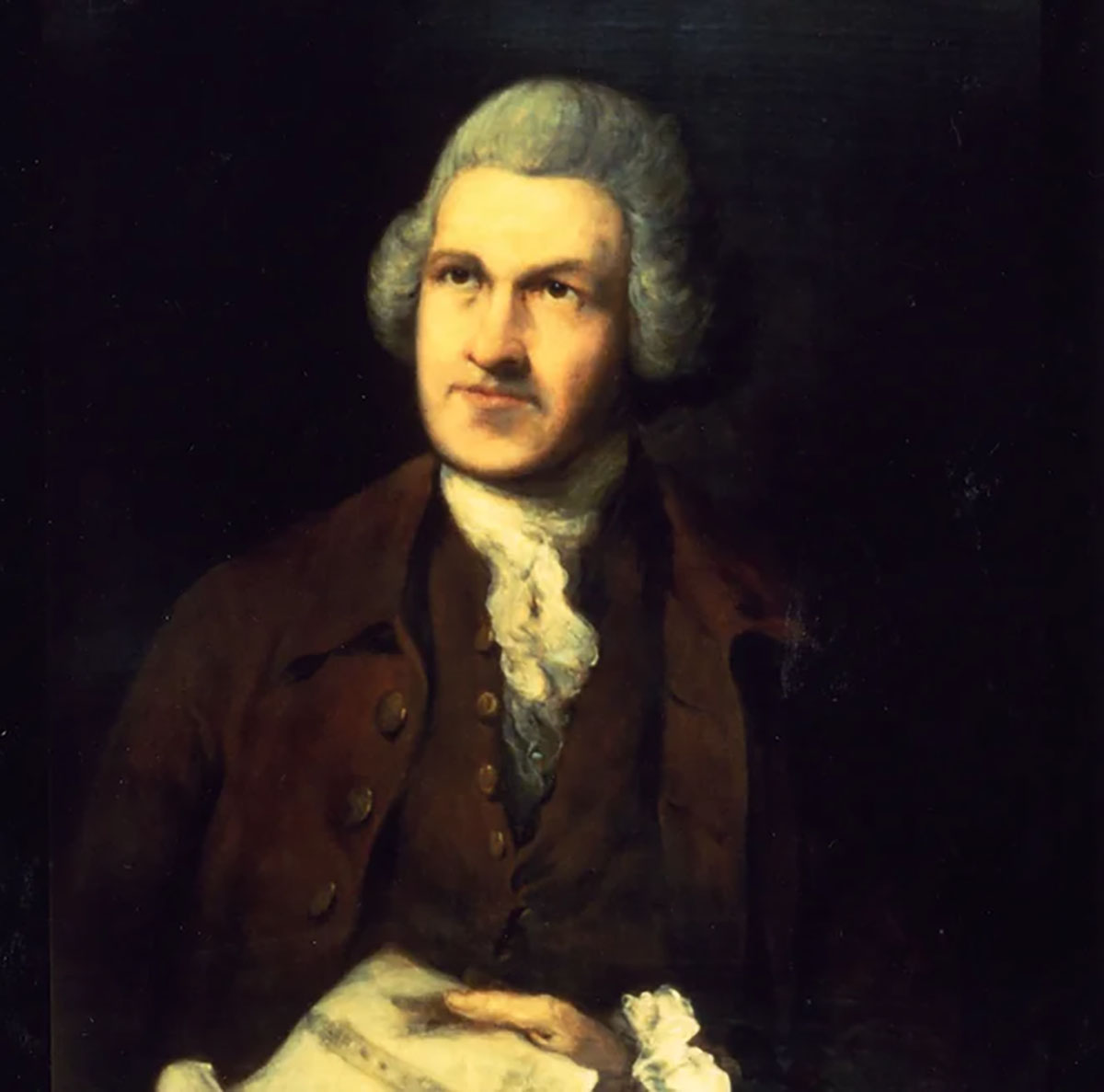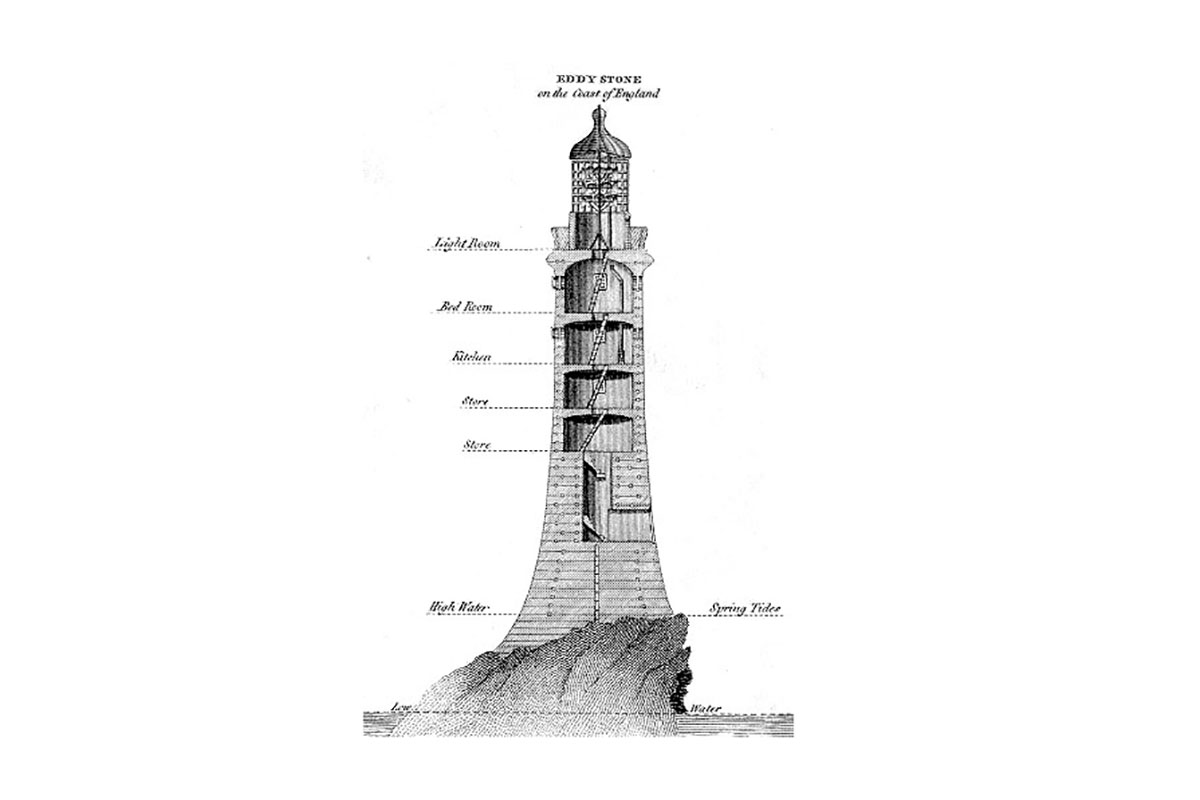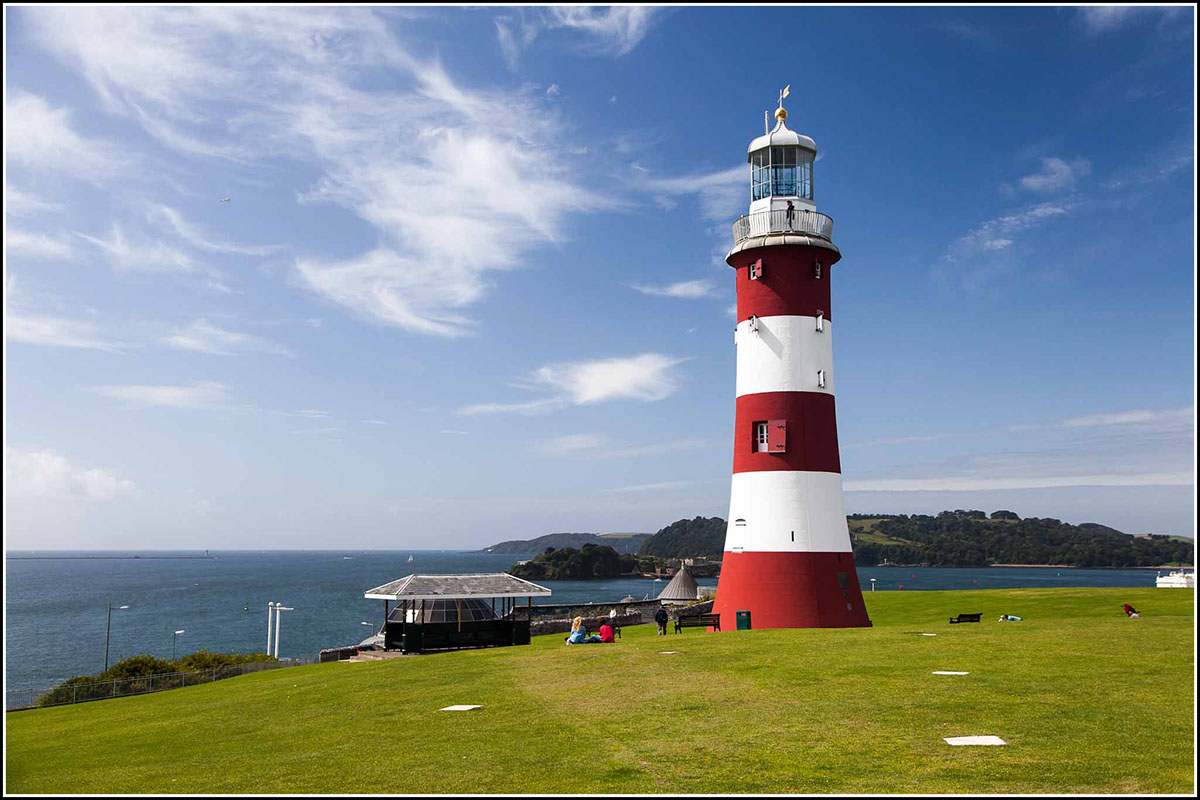
About 14 kilometers off the English coast of Cornwall, opposite the city of Plymouth and in the middle of the English Channel, the Eddystone Rocks rise above the sea. Its name is not misleading: more than islands, these are indeed a group of rocks which for centuries have hindered navigation along these coasts and which have been at the center of numerous shipwrecks.
The history of the Eddystone Rocks is also told by its lighthouses. The first, made of wood, collapsed during a storm that killed its designer. The second, made of oak and iron, was destroyed by fire. The third was created entirely of stone, with a design that revolutionized the construction of this type of tower and stood for more than a century, until the rock that supported it began to crack.
Behind this stone structure was John Smeaton, considered by many to be the originator of the civil engineering profession. Although the Eddystone Rocks lighthouse is one of his most important works, it was not the only one that marked history; he left behind a wealth of constructions and solutions that forever changed the trajectory of civil engineering.
But what is civil engineering?
Civil engineering is the discipline responsible for the design, construction and maintenance of infrastructure such as roads, railroads, bridges, ports, airports, hospitals and schools, among many other examples. Such infrastructure provides transport routes, work spaces, and places to live, thus improving people’s quality of life.
History has left us examples of civil engineering such as the Roman roads, medieval mills, and bridges that were perfected after the Industrial Revolution. However, the term did not emerge until the 18th century, coined to distinguish these works from those of military engineering, which have very different purposes.

Roman roads are considered an example of civil engineering from antiquity. This one is located near Rome, Italy. Adriano Pucciarelli (Unsplash).
In 1747, what is considered the first civil engineering school in history was established: The Ecole Nationale des ponts et Chaussées, which is still in operation today in Paris. However, the first person to call himself a civil engineer was John Smeaton, who began building the Eddystone Rocks lighthouse just nine years after the creation of this French school.
In 1771, Smeaton and some of his fellow engineers formed the Smeatonian Society of Civil Engineers. This sought to bring together the civil engineering professionals of Great Britain and gave rise to the professional engineering meetings that are still held today.
John Smeaton’s footprint

John Smeaton in a painting from the Science Museum / Science and Society Picture Library. The Smeatonian Society of Civil Engineers.
John Smeaton was born in Leeds, England, in 1724. His father was a lawyer who allowed him to dedicate his childhood and youth to what he loved the most: understanding how devices worked, experimenting with tools, and building his own mechanical projects. Even while still a child, he created a water pump that drained the fish ponds in his house.
He later moved to London, where he opened a business manufacturing scientific and mathematical instruments in an alley in Holborn. During those years, he was especially interested in navigation, astronomy and the potential of wind and water in engineering. He developed instruments such as a pyrometer and a rotating mirror (a precursor of the gyroscope), wrote numerous scientific papers, and investigated the mechanics of water wheels and windmills.
In 1756, on the recommendation of the Royal Society of London, he was chosen to build the lighthouse at Eddystone Rock. He decided to make it of stone, with granite foundations, and to imitate the shape of an oak tree to give it consistency and robustness, using the cobblestones of the streets of London intertwined with each other. To erect the tower in such a complicated location, he perfected what is known as Portland cement by adding new additives that favored rapid drying, which was necessary to resist contact with salt water.

Detail of the Smeaton lighthouse, circa 1759. Unknown author (Wikimedia Commons).
“Progress was painfully slow: even reaching the rock was often impossible in the middle of the raging sea. Three years passed before he finally precariously placed the golden ball on top and waited for the candles to be lit. He was full of anxiety, but his lighthouse was to stand for 130 years, until the rock itself collapsed,” they explain in the archives of The Historical Society for Leeds and District. More than a century later, the rock on which the lighthouse stood began to break, so a more modern lighthouse was built and a replica of Smeaton’s was placed on land.

Replica of the lighthouse of Smeaton on land. Smudge 9000 (Flickr).
At the time, Smeaton’s innovation in foundations and the development of new techniques and materials established his reputation as an engineer. During those early years of the Industrial Revolution, Smeaton participated in the construction of all types of civil engineering works and left his mark on bridges, ports and canals. For example, he was behind the construction of the Forth and Clyde Canal in Scotland. He contributed to the development of the steam engine, which facilitated the optimization of hydraulic mills and the use of wind and water power. But the list doesn’t end there!
Smeaton died in 1792, aged 78, in the same neighborhood of Leeds where he was born. In addition to numerous pieces of infrastructure and technical improvements, which determined the construction of thousands of subsequent works, he left behind the profile of what we know today as civil engineers. A profession without which the story of the decades following his death, marked by the pace of the first Industrial Revolution, cannot be told.
Main image: Painting by Charles Henry Seaforth with John Smeaton’s lighthouse in the background (Wikimedia Commons).





1 comment
Danes Anthonius
01 of August of 2024
jasar renovasi rumah